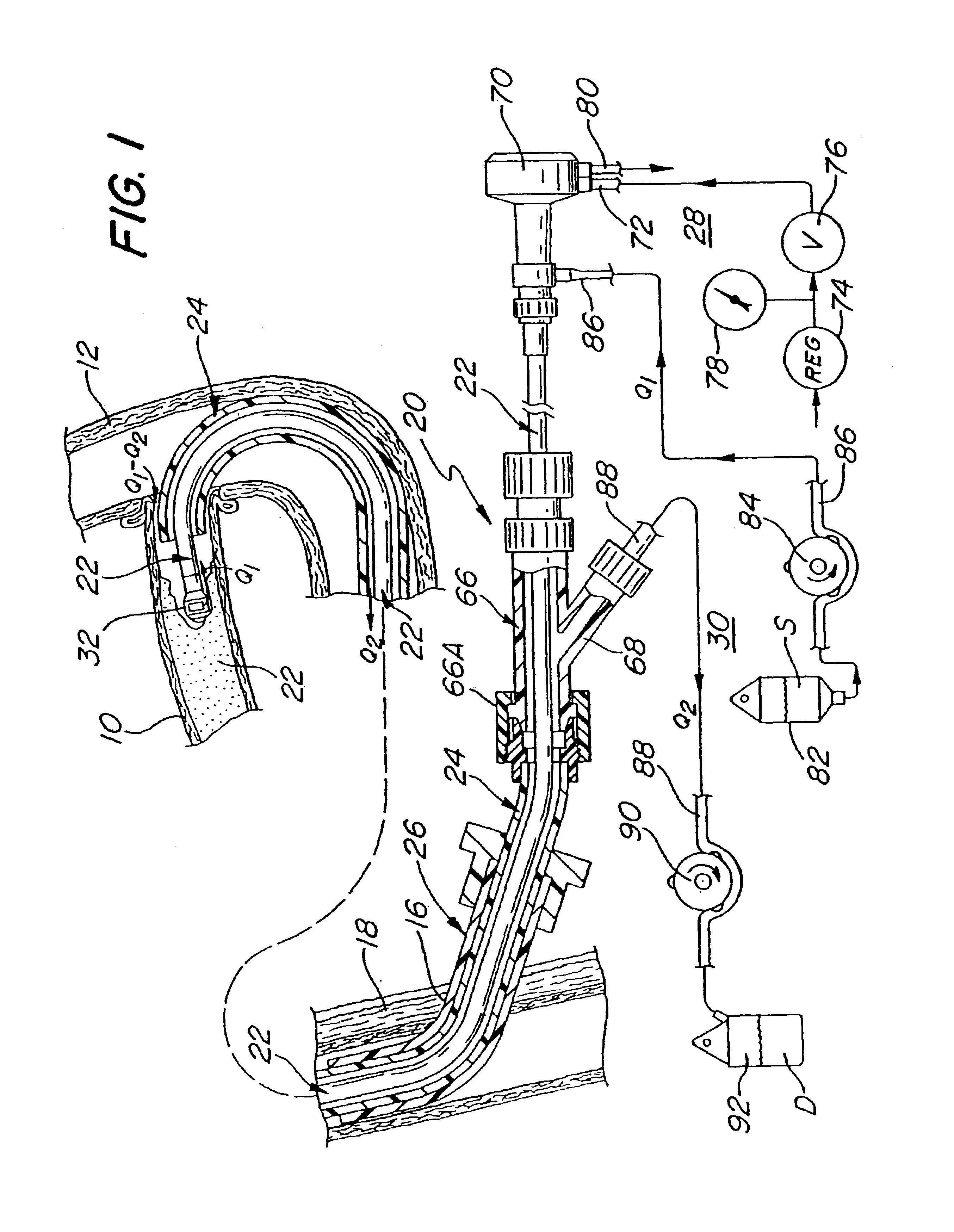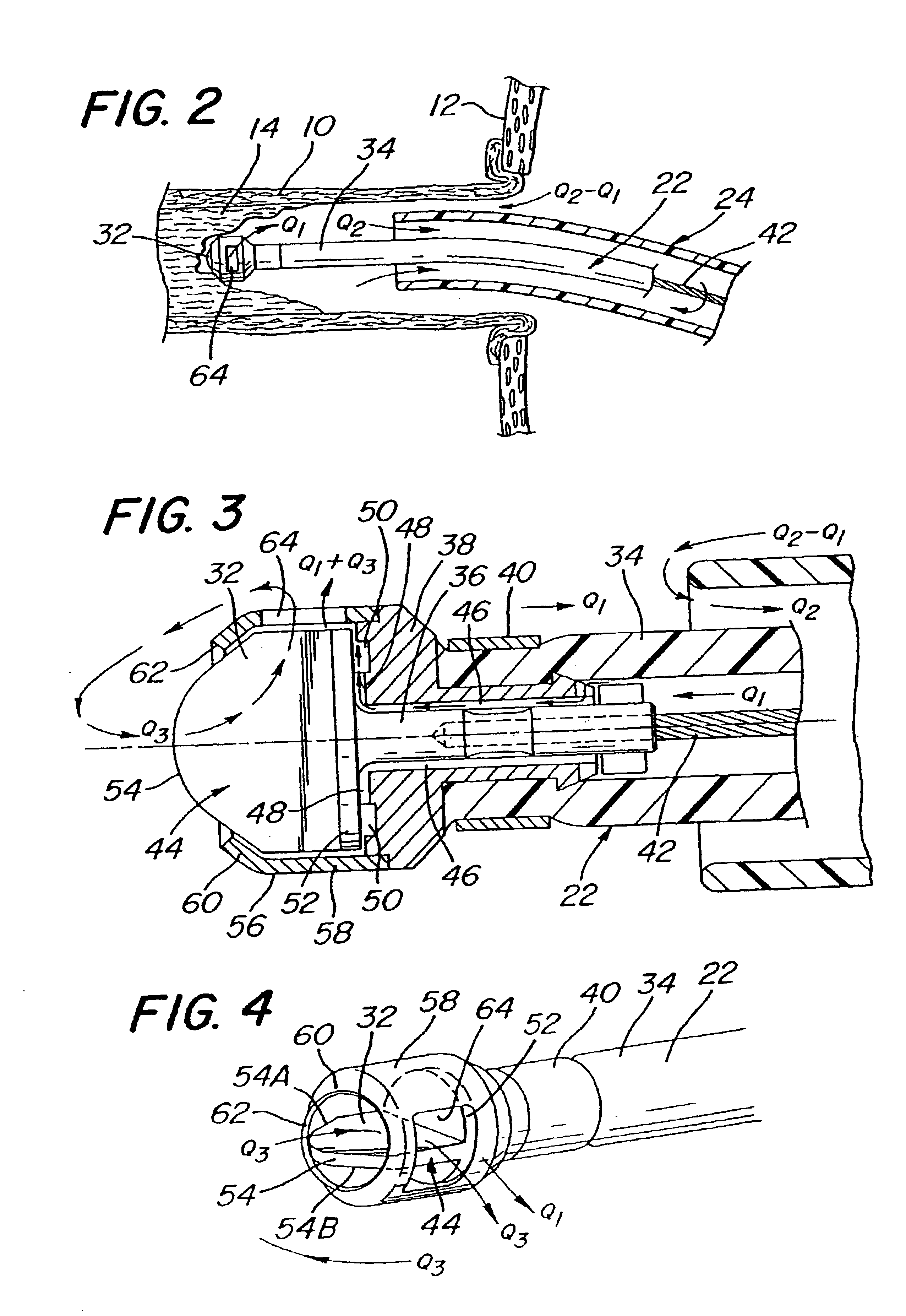Intravascular system for occluded blood vessels and guidewire for use therein
a technology of occluded blood vessels and intravascular system, which is applied in the field of medical devices, can solve problems such as the production of debris
- Summary
- Abstract
- Description
- Claims
- Application Information
AI Technical Summary
Benefits of technology
Problems solved by technology
Method used
Image
Examples
Embodiment Construction
[0043]Referring now in greater detail to the various figures of the drawings wherein like reference characters refer to like parts, there is shown at 20 in FIG. 1 a system for revascularizing or opening a lumen through a coronary bypass graft which has become occluded, such as by the formation of a stenotic lesion or the build-up of plaque therein. As used herein the term “occluded” is given its broadest interpretation. Thus, an “occluded” graft or blood vessel may be either totally blocked or only partially blocked (i.e., there is a passageway or lumen through which some blood may flow).
[0044]The system 20 is arranged to be used for forming or enlarging a lumen through any blood vessel within the body of a living being, e.g., an occluded femoral artery downstream of the profunda femoris, not necessarily an occluded coronary bypass graft or an occluded coronary artery. In particular, the system 20 is arranged to produce a channel or lumen or to enlarge a lumen through the occlusive ...
PUM
 Login to View More
Login to View More Abstract
Description
Claims
Application Information
 Login to View More
Login to View More - R&D
- Intellectual Property
- Life Sciences
- Materials
- Tech Scout
- Unparalleled Data Quality
- Higher Quality Content
- 60% Fewer Hallucinations
Browse by: Latest US Patents, China's latest patents, Technical Efficacy Thesaurus, Application Domain, Technology Topic, Popular Technical Reports.
© 2025 PatSnap. All rights reserved.Legal|Privacy policy|Modern Slavery Act Transparency Statement|Sitemap|About US| Contact US: help@patsnap.com



